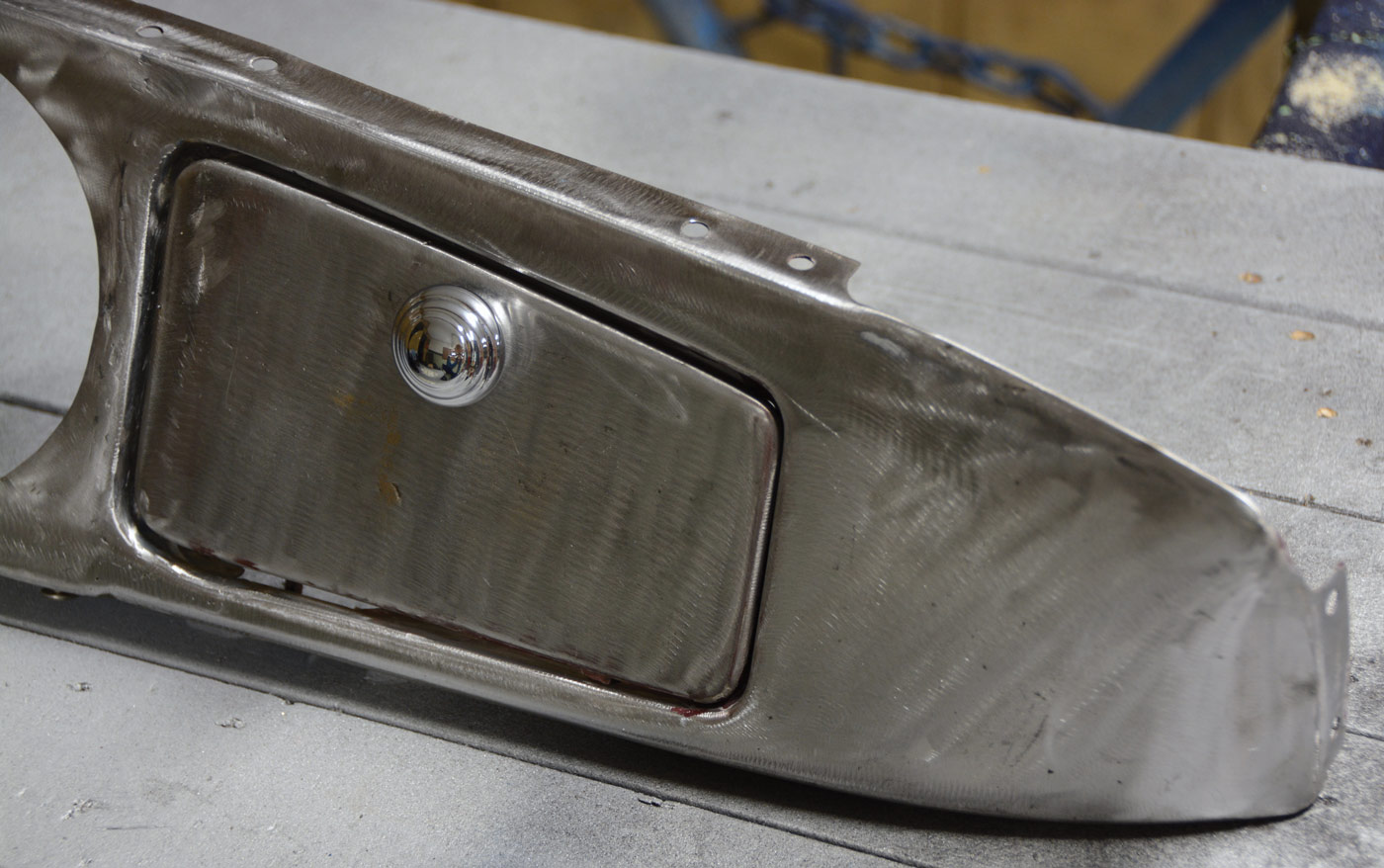
 Photography by THE AUTHOR
Photography by THE AUTHORur project ’36 Ford phaeton is making steady progress. After painting it at home (Modern Rodding Apr. ’22 issue; https://inthegaragemedia.com/inflatable-spray-booth-makes-it-easier-to-paint-like-a-pro/) we cut, buffed, and started assembling the body. However, we had not addressed the dashboard, mostly because we were determined to be done with the bodywork and because the dash will be a different color than the body.
The dashboard would be our first step in building the interior. In my humble opinion, the ’36 Ford open-car dashboard is overly plain, heading toward ugly. It should be noted, closed cars had a better dash. Since the roadsters and phaetons had this plain-Jane look, it was perfect material for a little hot rod enhancement.
We decided to ditch the stock ’36 Ford gauges in favor of a ’47 Ford speedometer and clock. We liked the larger size and the art deco look of the later gauges. Since this is a very traditional car, we decided black Stewart-Warner gauges, fresh off SpeedwayMotors.com, would be the perfect mate for our ’61 vintage, black face Stewart-Warner tach.
Armed with that decision we took out our tape measure and quickly ran out of room for the gauges. It seems the glovebox was consuming a disproportionate amount of the dashboard; it was more like a footlocker than a glovebox. To make everything fit, the glovebox would need to be shortened. We have seen hot rods with the glovebox eliminated, but felt we needed all the weather-tight (relatively speaking) storage we could get in our topless tub.
So we set about a glovebox reduction program, along with building a new steel glovebox in place of the cardboard unit from 1936. Like most metalworking projects it was a matter of working slowly and measuring twice … cutting once. Our reduction in size was dramatic, yet with the dashboard back in the car it looked quite proportional, and chances are the untrained eye could assume it is a factory glovebox. (We may even start a rumor about the super-rare, “small glovebox ’36 Ford phaetons;” only five were built, all on April 1, 1936. One known to survive.) (Editor’s note: This is what happens when you are living on an island off the coast of Georgia! —B.B.)
Because of the taper of the dashboard the glovebox door is not square, rather it follows the contour of the dashboard. To reduce the opening and then fill it with a door involved cutting it both vertically and horizontally. The glovebox door accents these tapers for a very pleasing look. We managed to make cuts that saved the factory mounting tabs for the actual glovebox, again adding to the illusion of a factory unit.
The glovebox door hinge is a rudimentary unit made of a rod that rotates in two simple brackets. We shortened the rod and used one original hinge hole and drilled a second hole to complete the hinge. We drilled a hole in the center of the door and used a cool chrome knob from Lokar to complete the early hot rod look.
After the glovebox project was complete, we had the desired extra room for our gauges. We will show you the completion of the dashboard and gauges in the next issue. But for now, let’s take a closer look at reducing and reshaping our ’36 Ford glovebox.
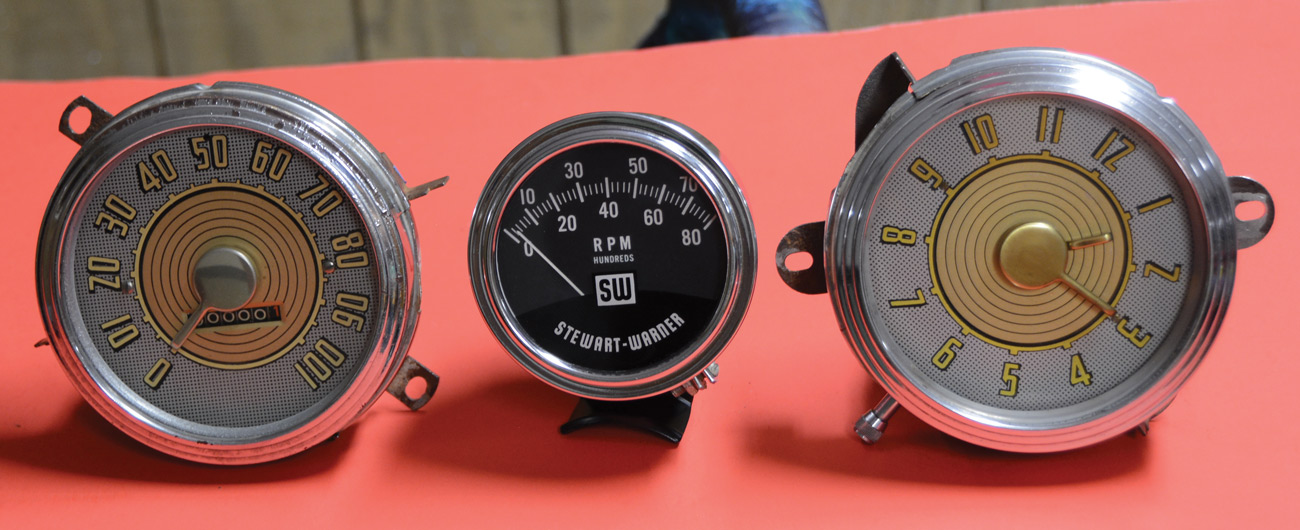
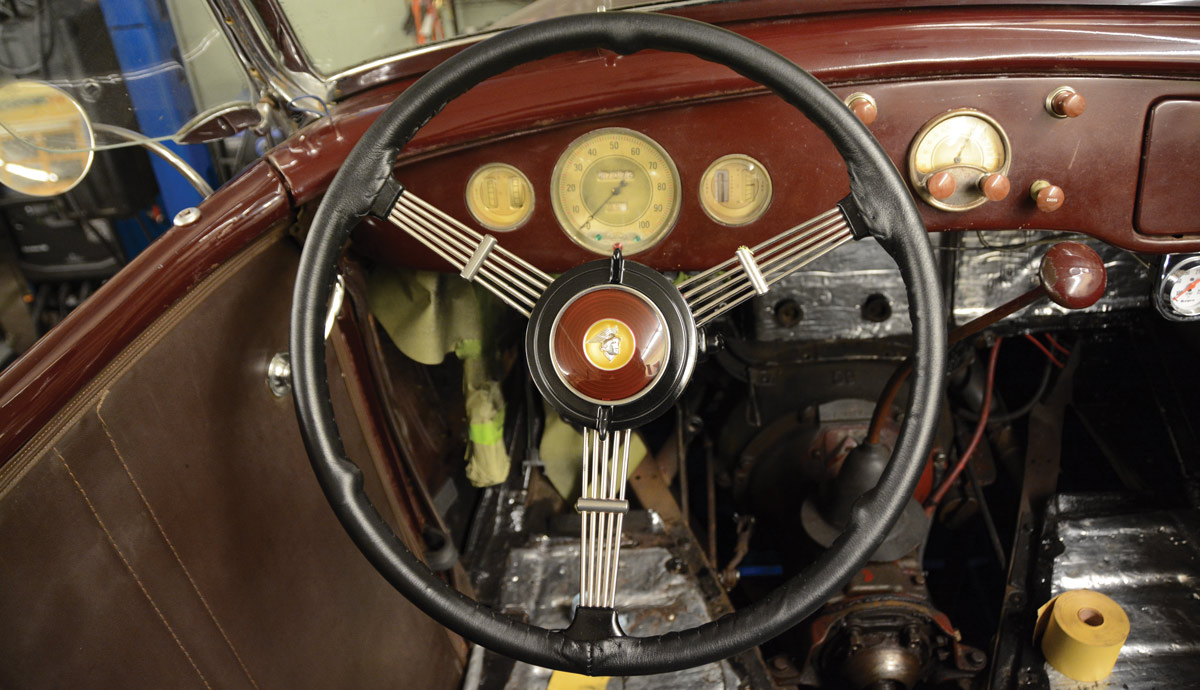

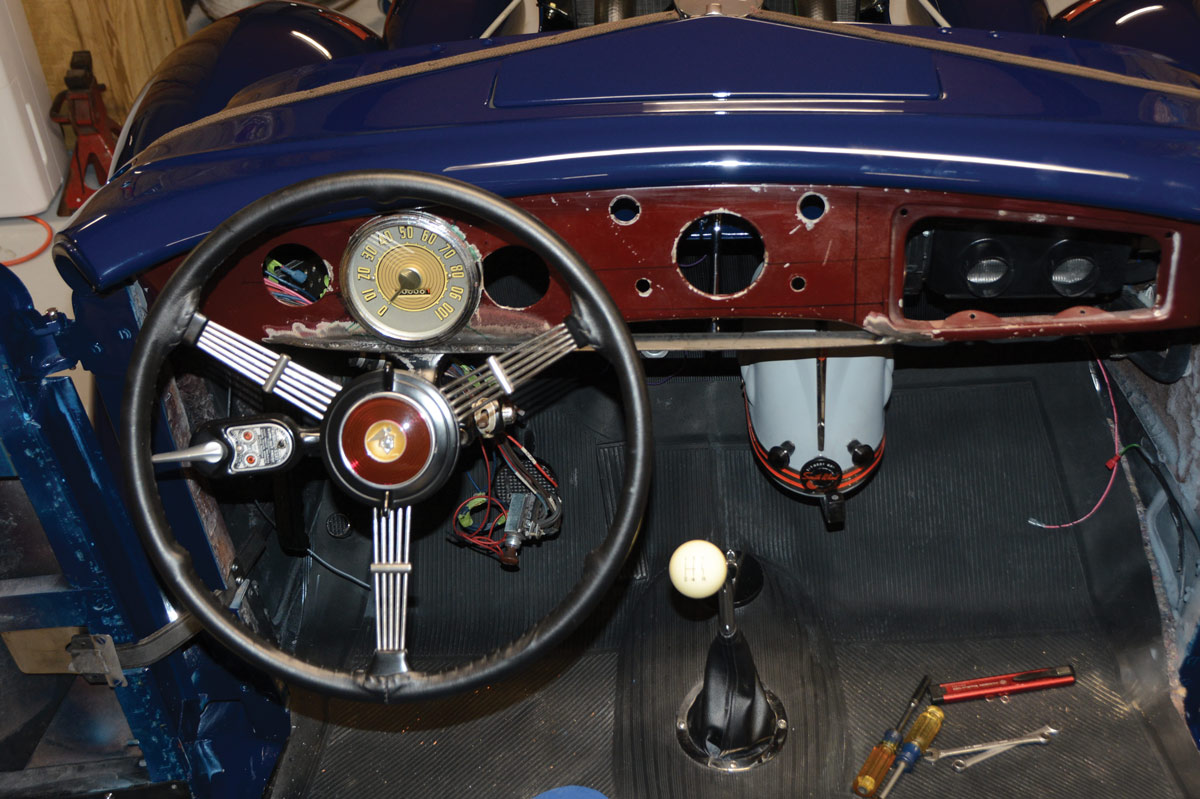
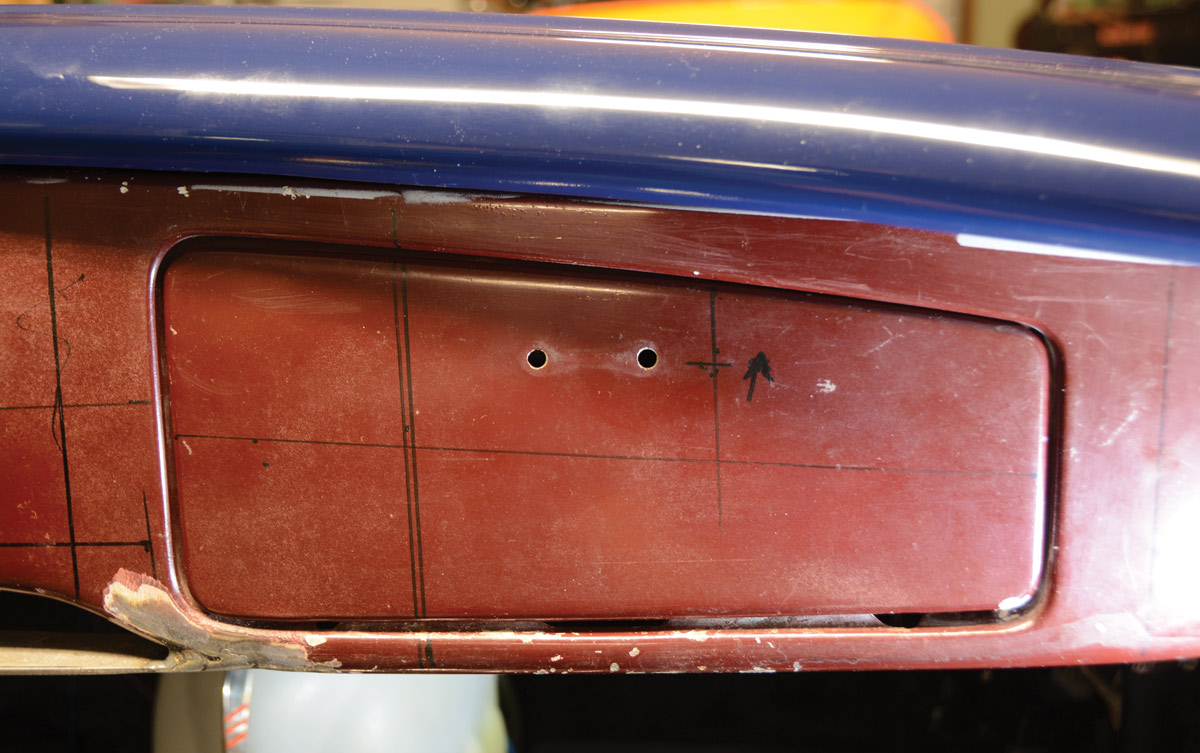
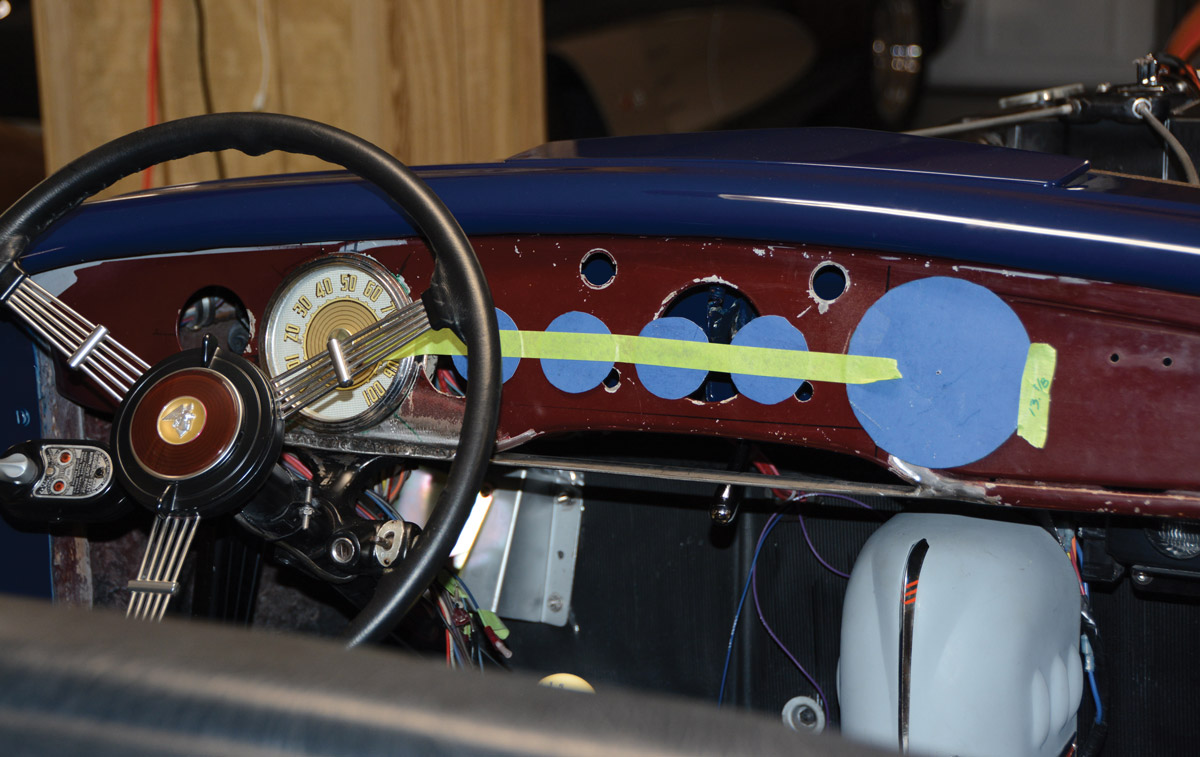

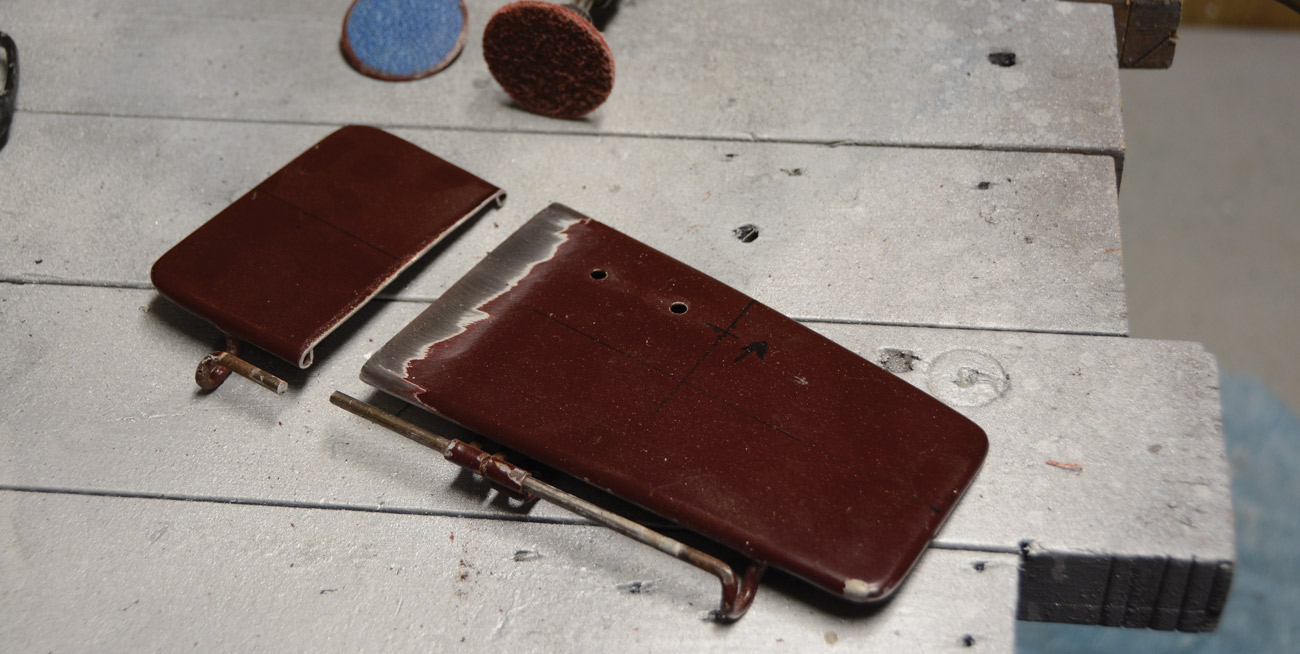
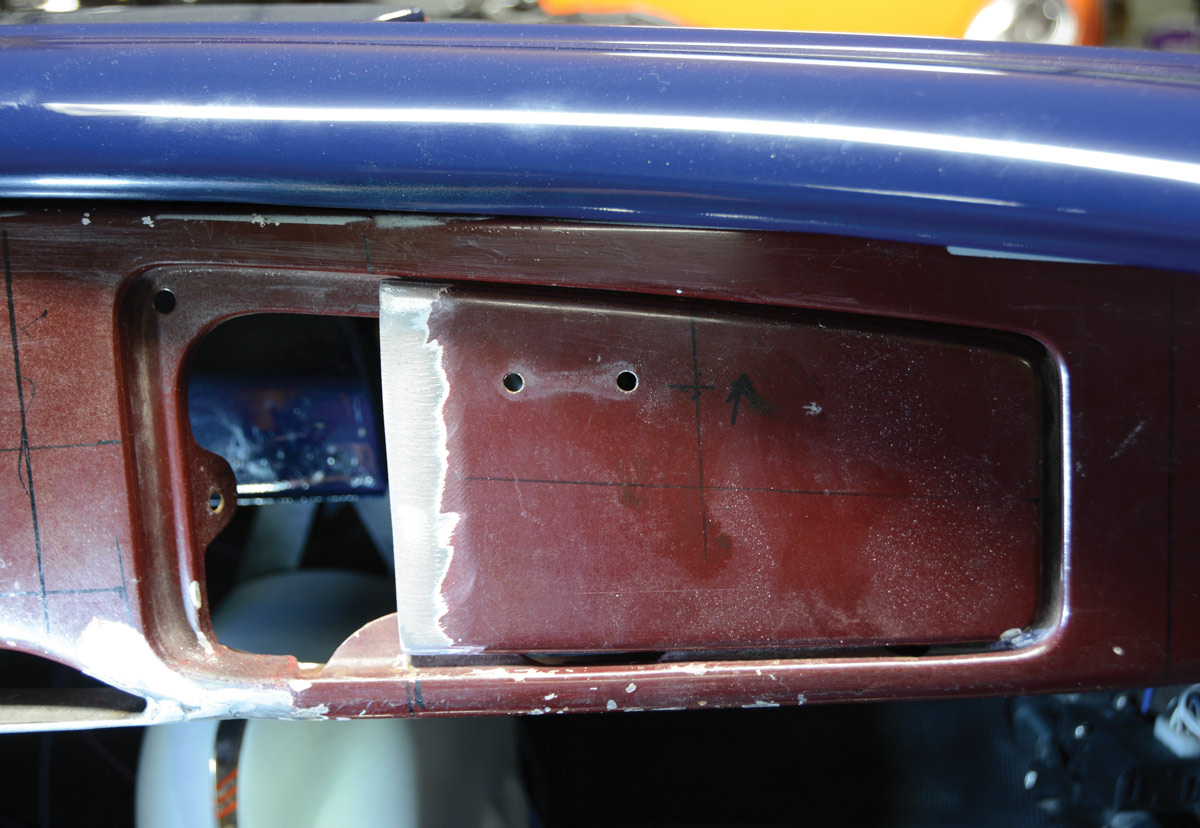
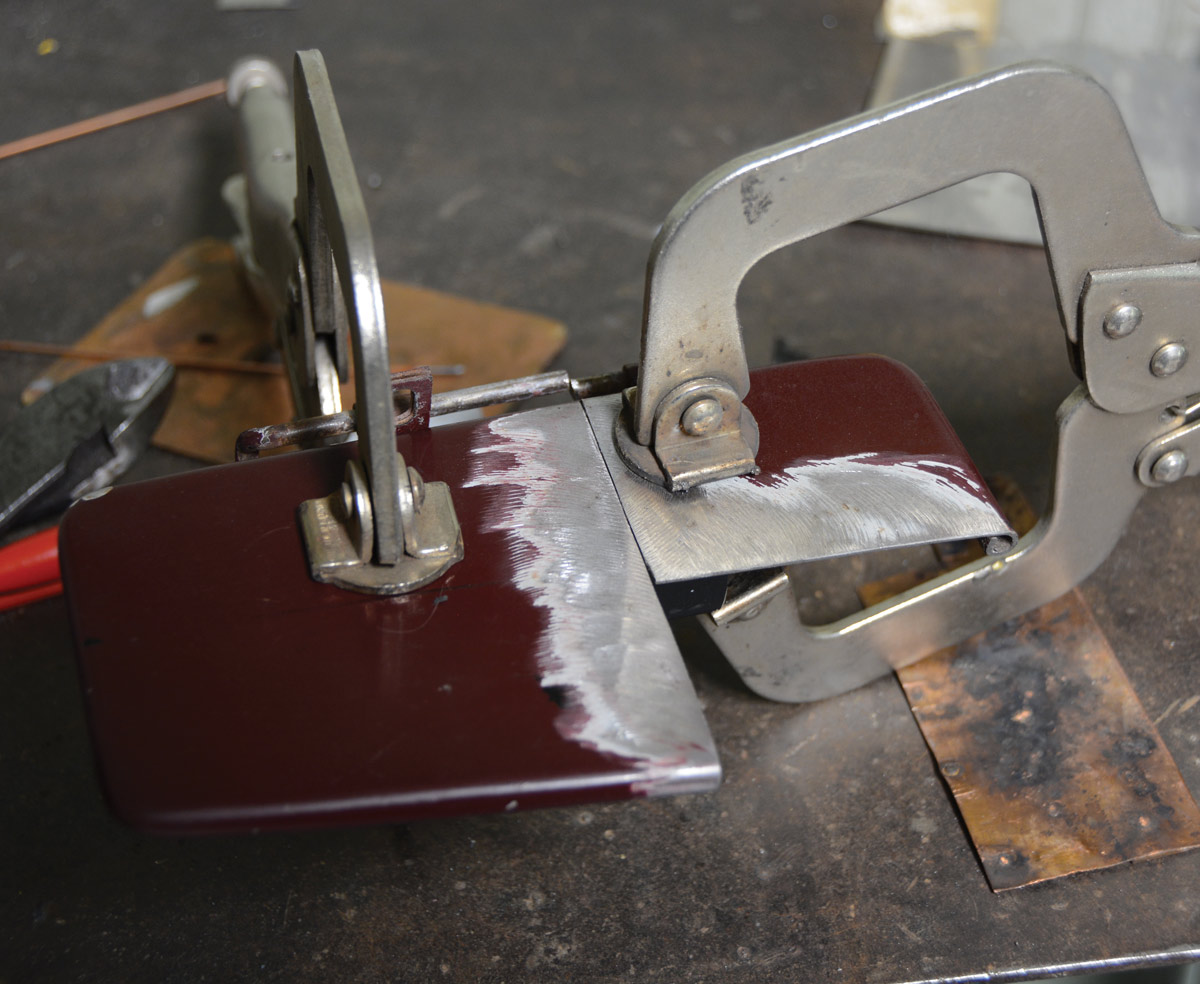

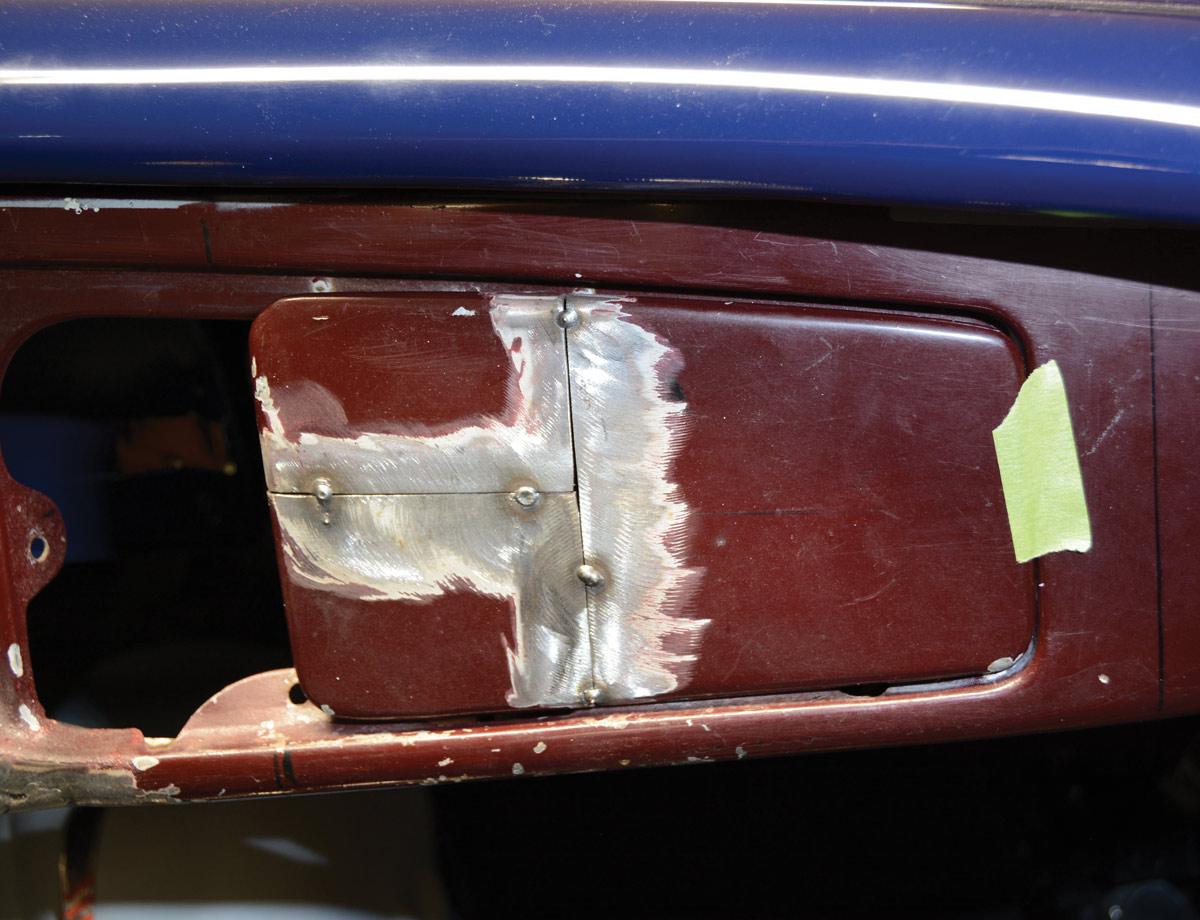
13. We repeated the same procedure for the top corner. Again, careful fitting and trimming always pays. To our eye, the shorter door forms a more pleasant shape.
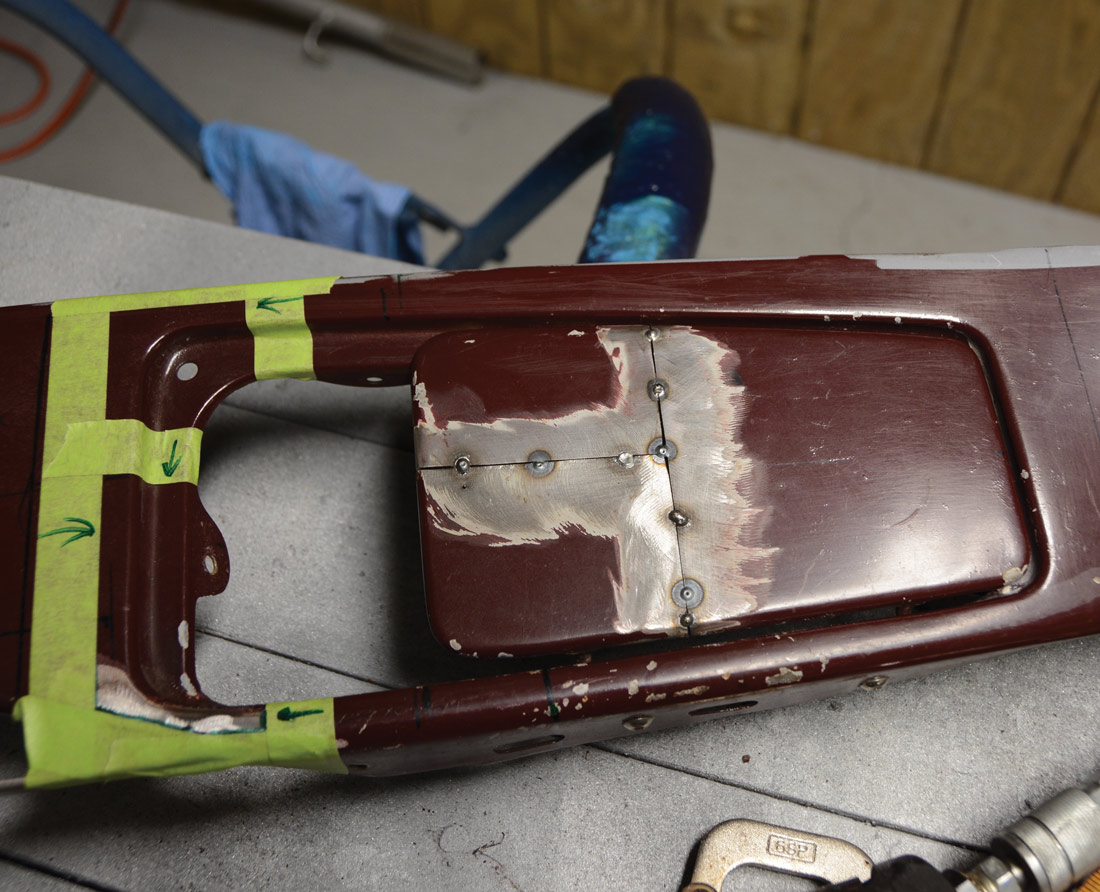
14. Now the trick is to move the stock corners over to form the dashboard opening. We like to use tape to mark cut lines, and the arrows indicate which side of the tape to cut … not that we have ever cut on the wrong side!


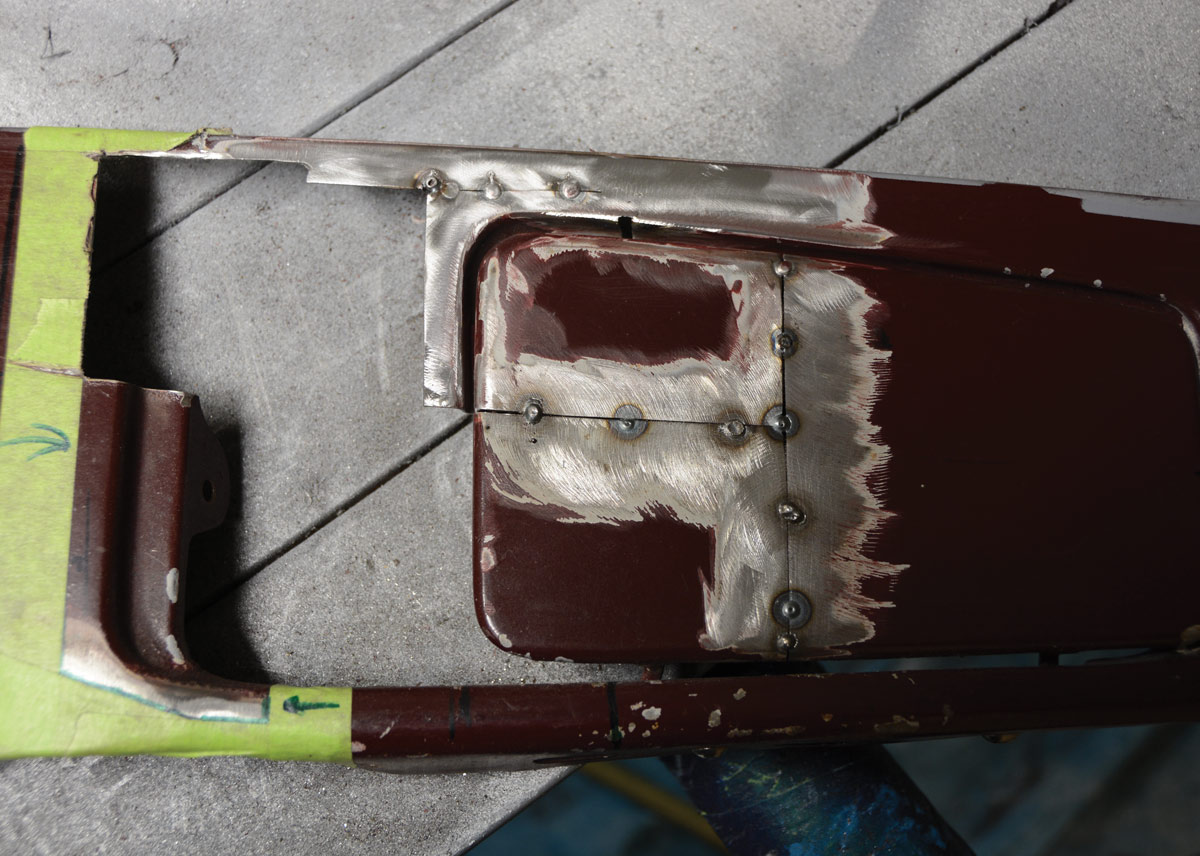
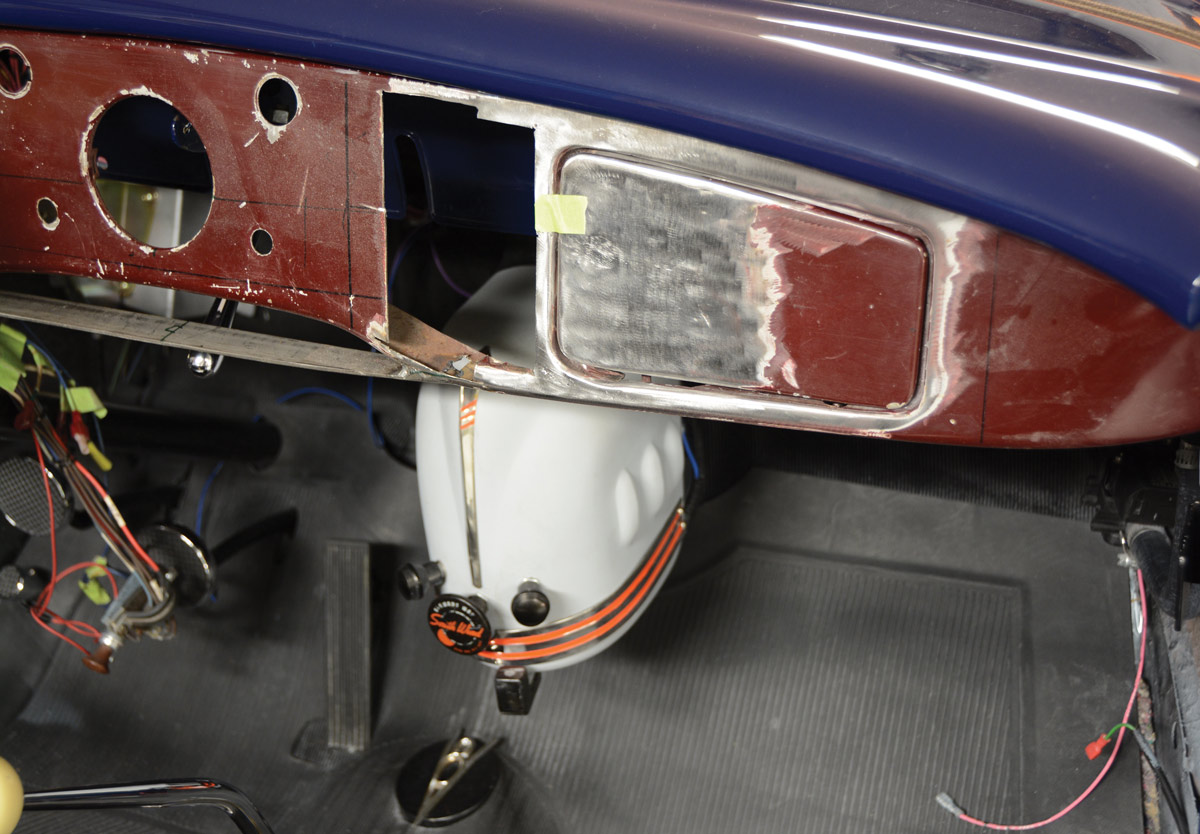
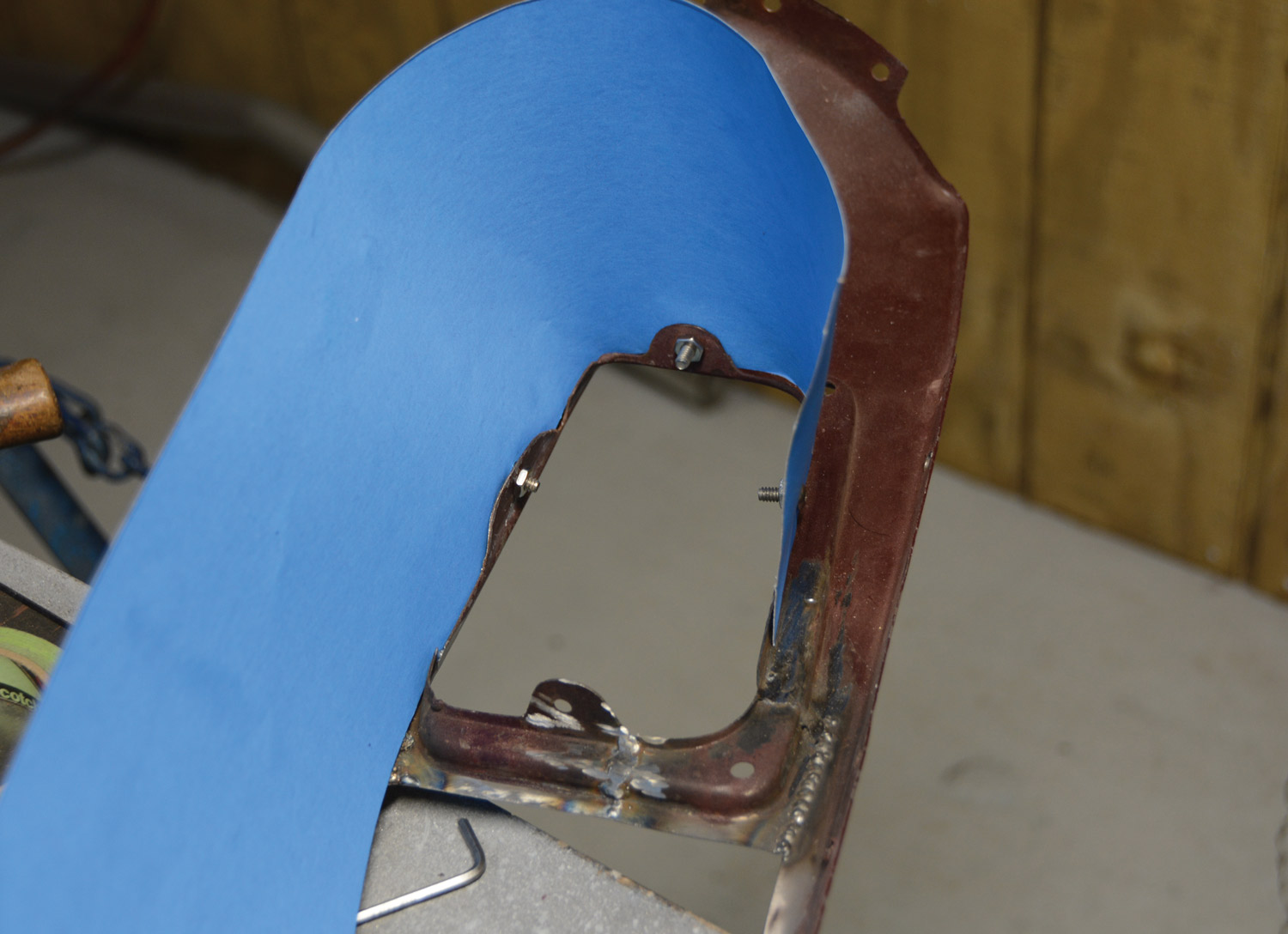

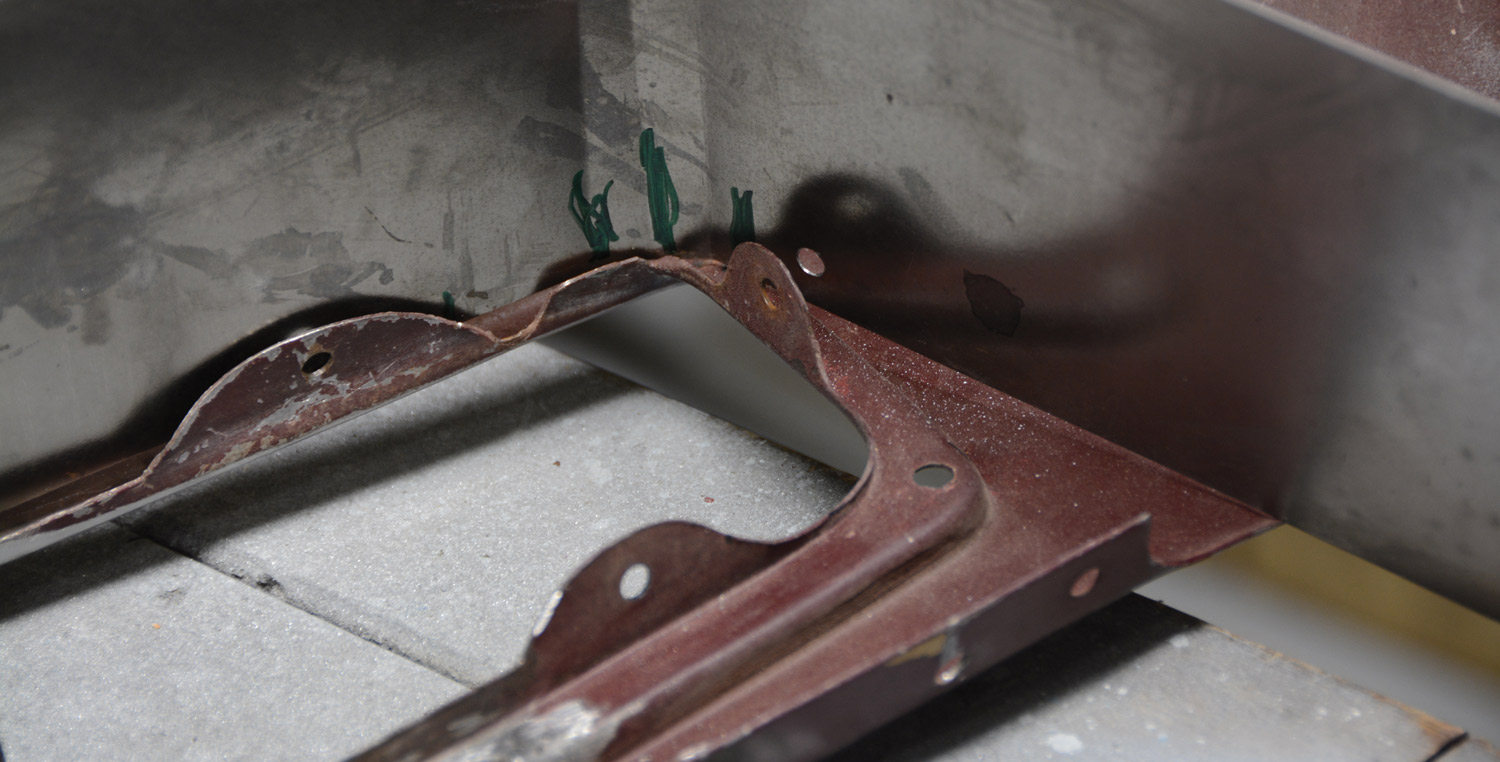
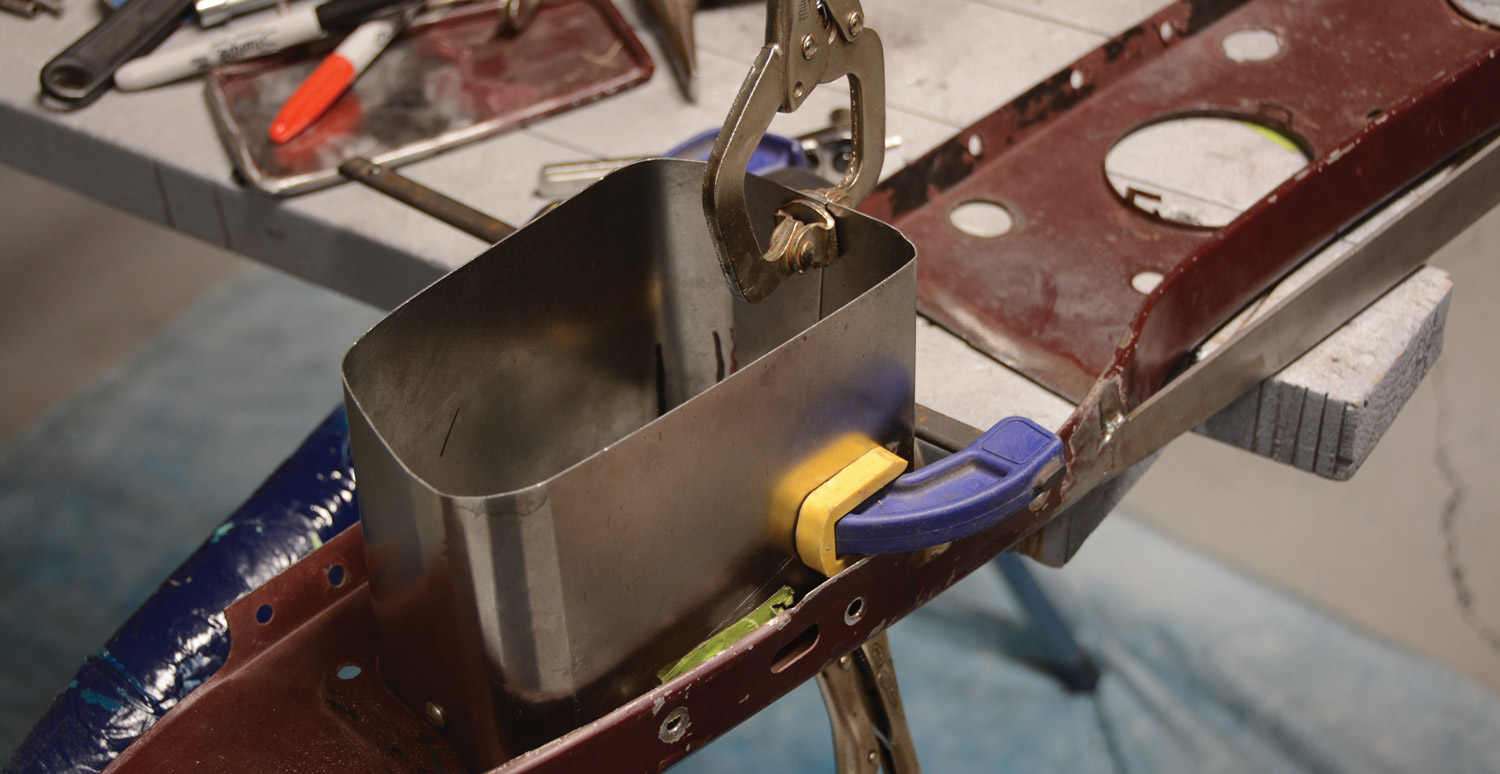
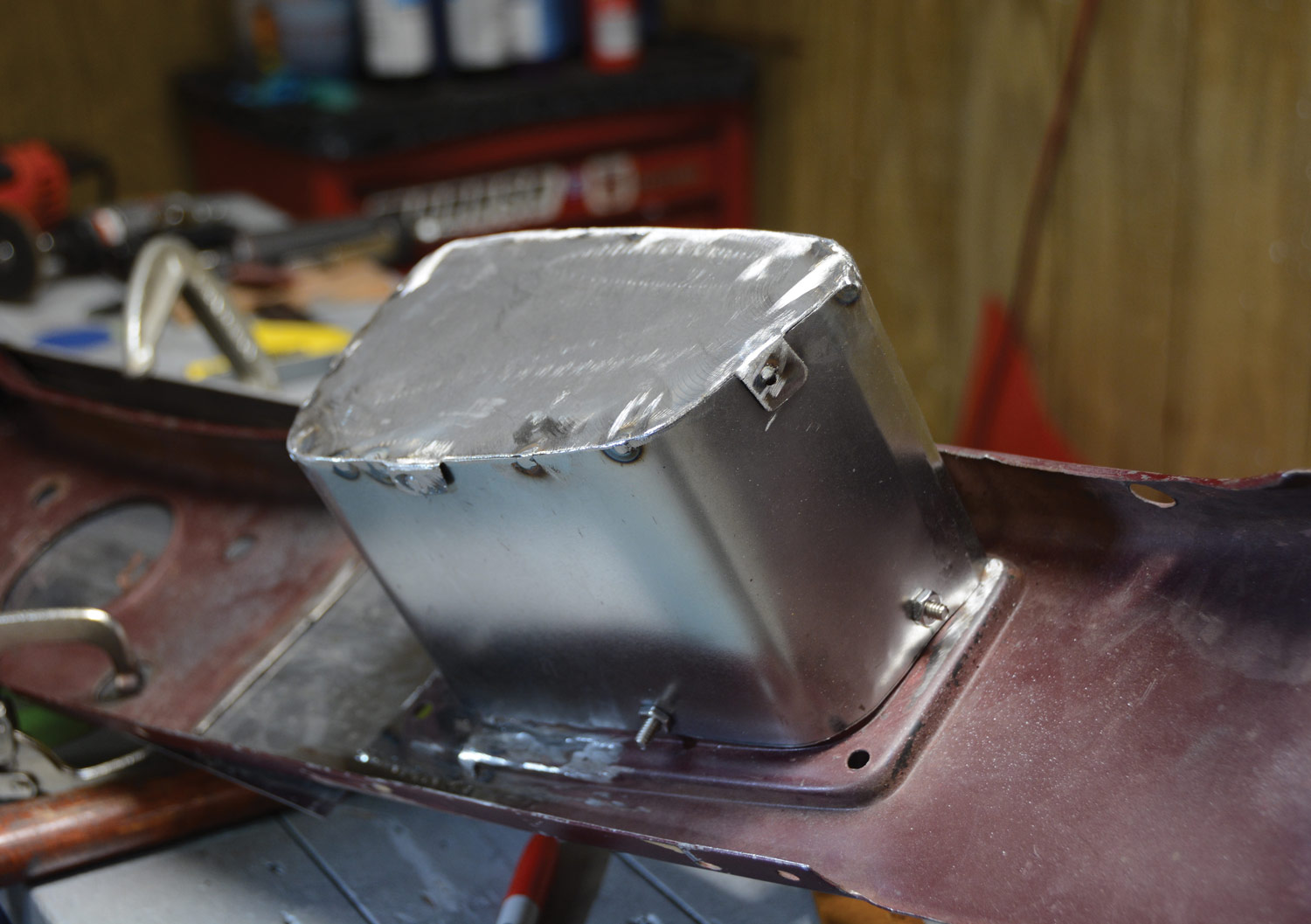
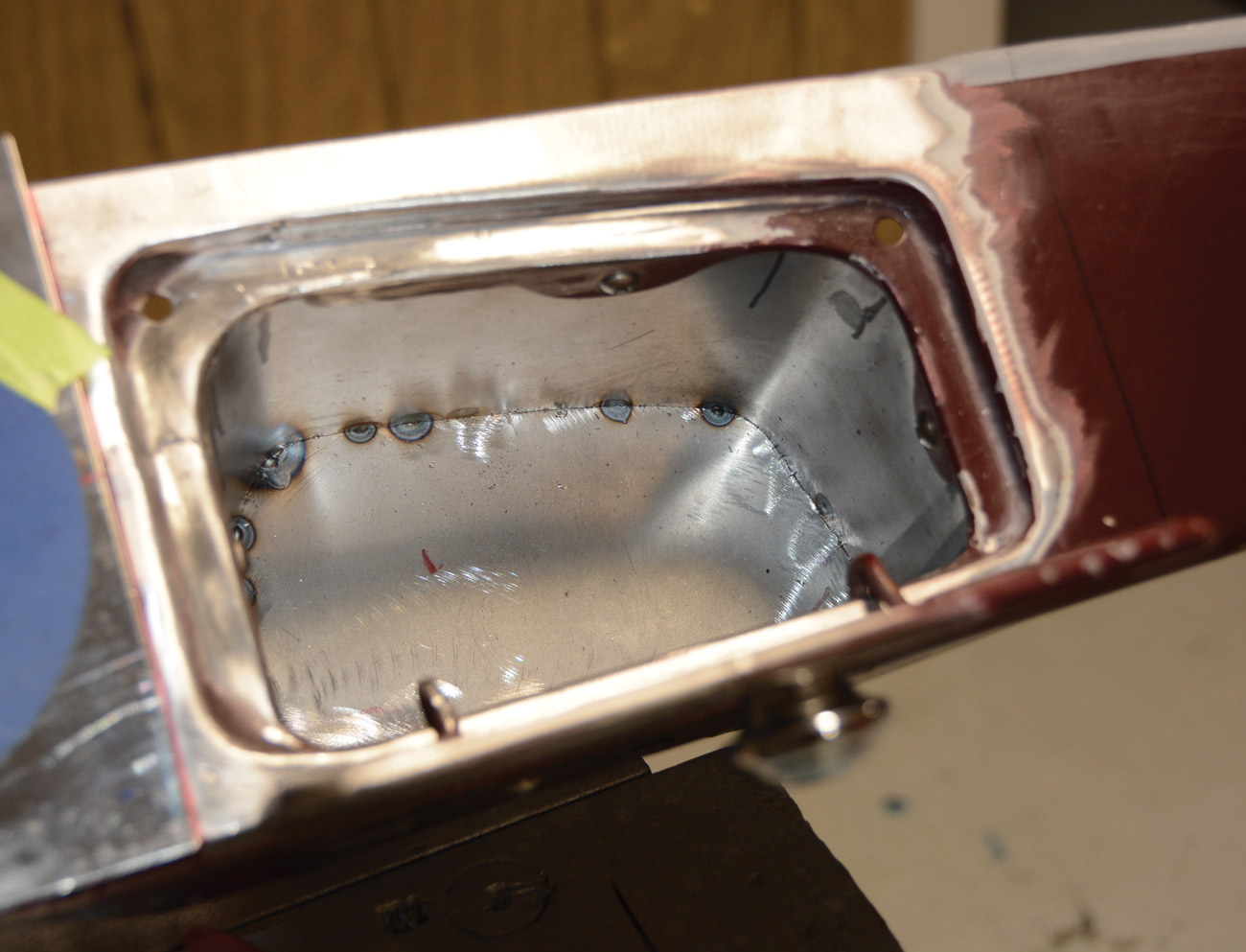
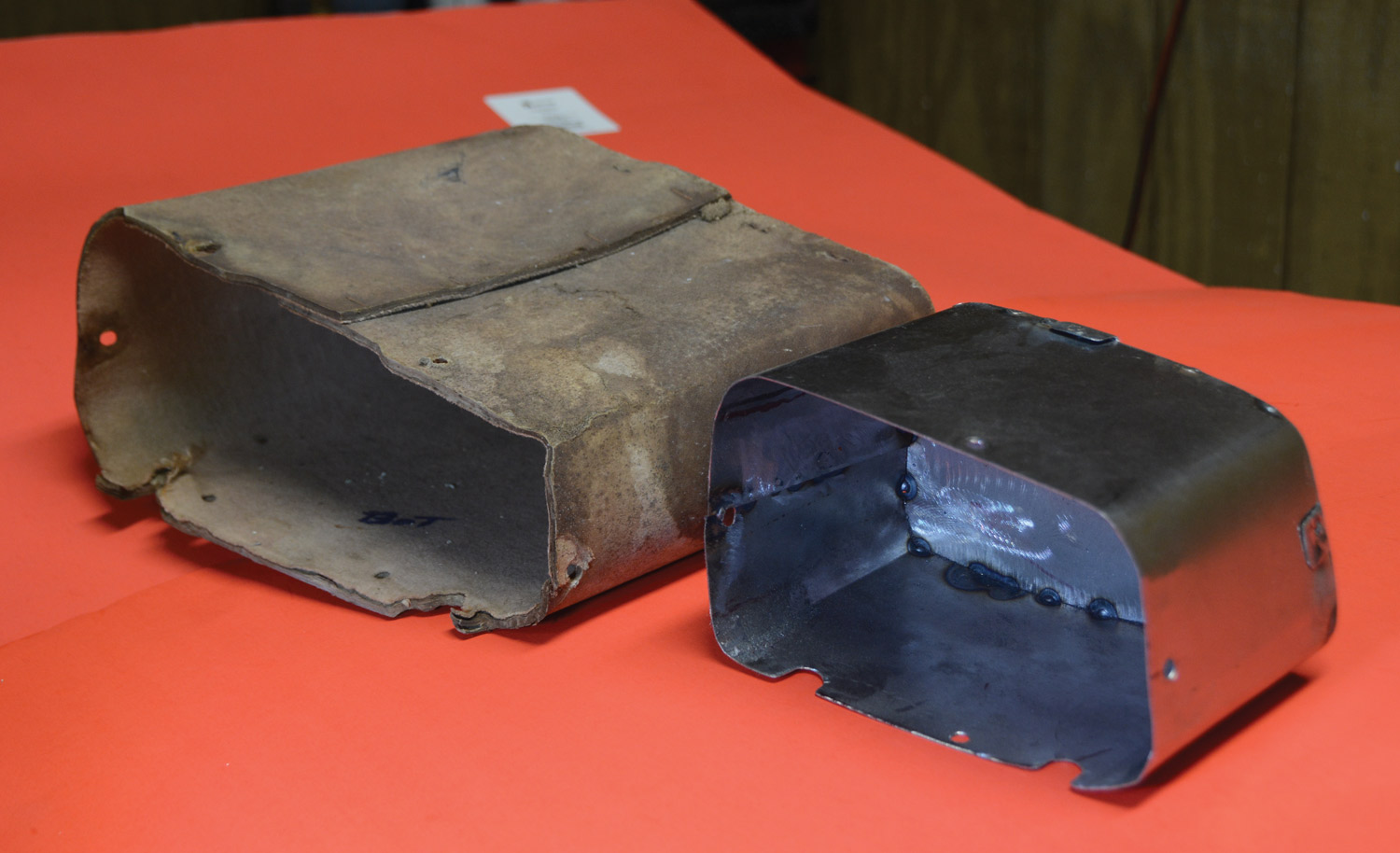
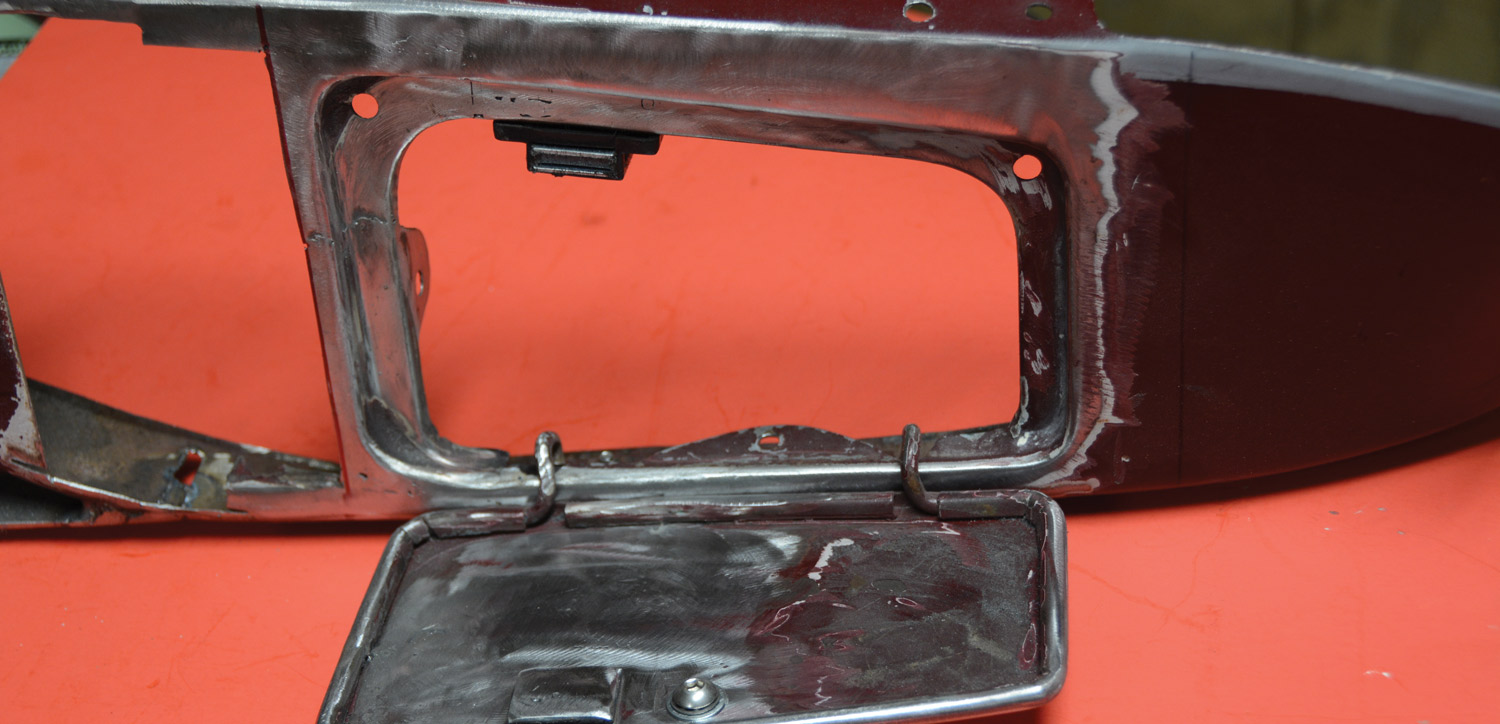
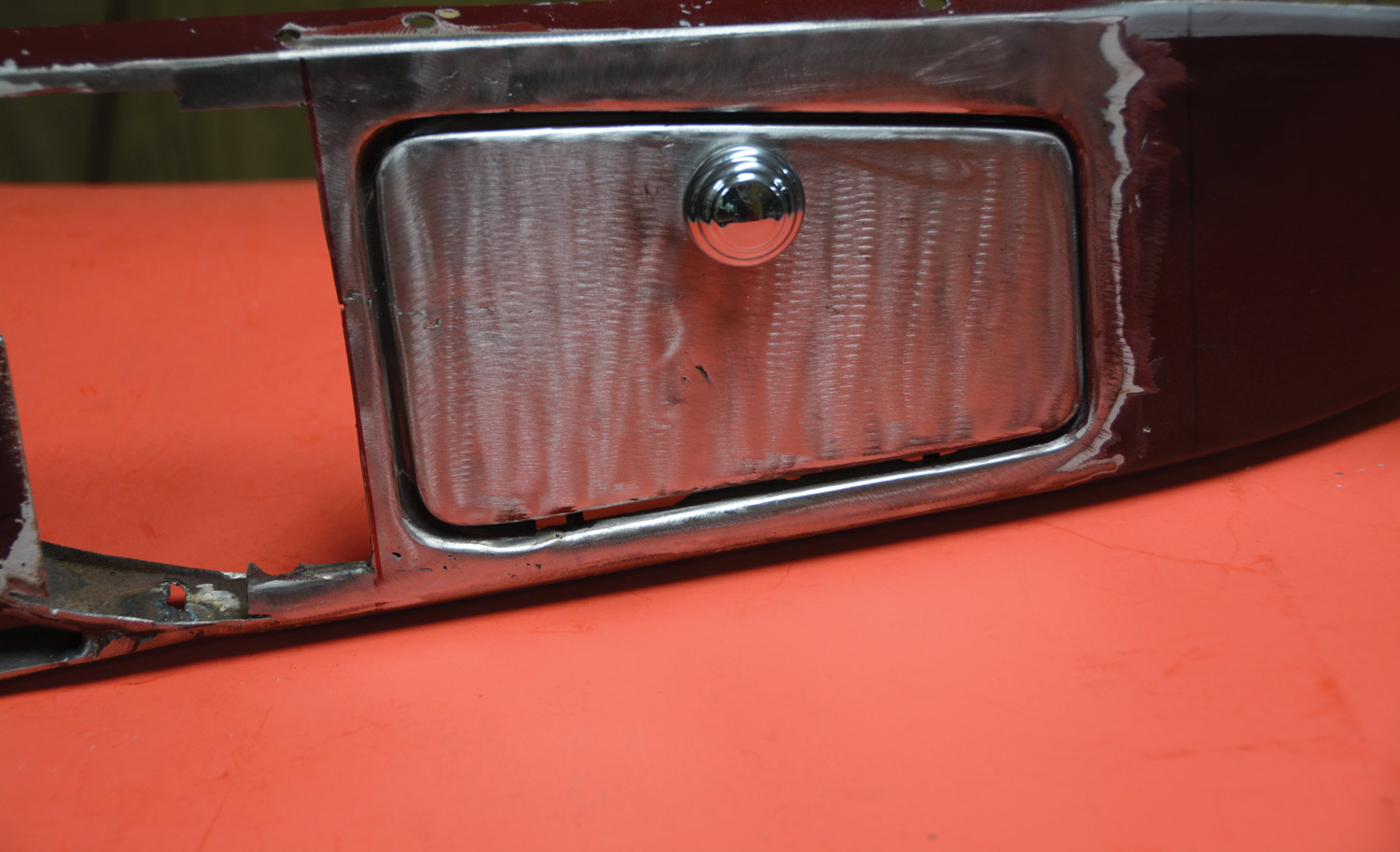
VOLUME 3 • ISSUE 23 • 2022